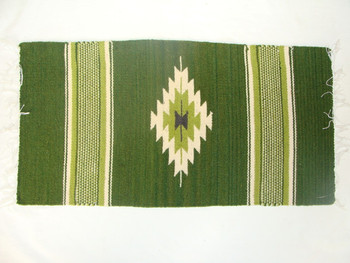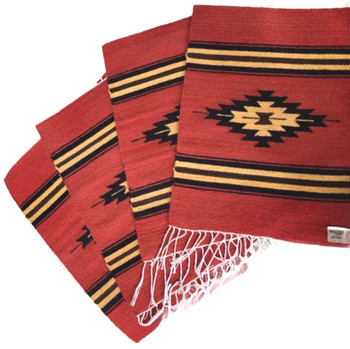Description
- Handwoven with centuries of Andean tradition, each piece is unique and made with hand-dyed wool using natural pigments.
- These quality weavings are exclusive to the artists at the Sanyork Studios in Lima, Peru.
Nestled in the Andean highlands of Peru, the mountain city of Ayacucho is home to some of the finest wool-workers of the world. Wool is collected from free-range sheep and hand-spun, dyed with indigenous vegetable extracts and high-quality mineral pigments. Then, woven on a loom and removed for hand-finishing edges. Our co-op in Lima follows the principles of fair-trade and is composed of 11 displaced families utilizing over 14 looms.
Specifics:
- 100% wool
- Dyed using natural pigments
- Assorted colors and designs
- 12"x 64" (Sizes may vary slightly)
The sheep of Peru consist mainly of three types – Corriedale, Junin and Criollo. Of the estimated 18 million sheep in Peru, 60% are Criollo (also called Pampa,Columbian, Creole or Chilludo) and these are the type best adapted to the High Andean environment as well as the ones commonly kept by indigenous communities. Sheep’s wool is often used to weave more rustic products that do not directly touch the skin, such as belts. These sheep developed over hundreds of years, living in the mountain regions of much of South America and are believed to be descendants of the Spanish Merinos and Churro, which were introduced in the mid-16th Century. It is unclear whether there were existing sheep varieties in Peru before the Spanish arrived, and if there were, they may have played a role in the development of the present day genetic makeup of the Criollo. These sheep are small to medium-sized (weighing 30-50 lbs) and hardy. The rams have horns, and are typically white, black, light brown or a blend of these shades.
Although their wool production is low (approx. 2 kg per year/per animal) their numbers are enormous compared to the alpaca. Therefore sheep’s wool is the most commonly used fiber in the region and most traditional Andean weaving is made from sheep’s wool. It is easier to work (weave and dye). The wool is extremely durable and warm, and the resulting cloth tends to be heavier than alpaca fiber products.











